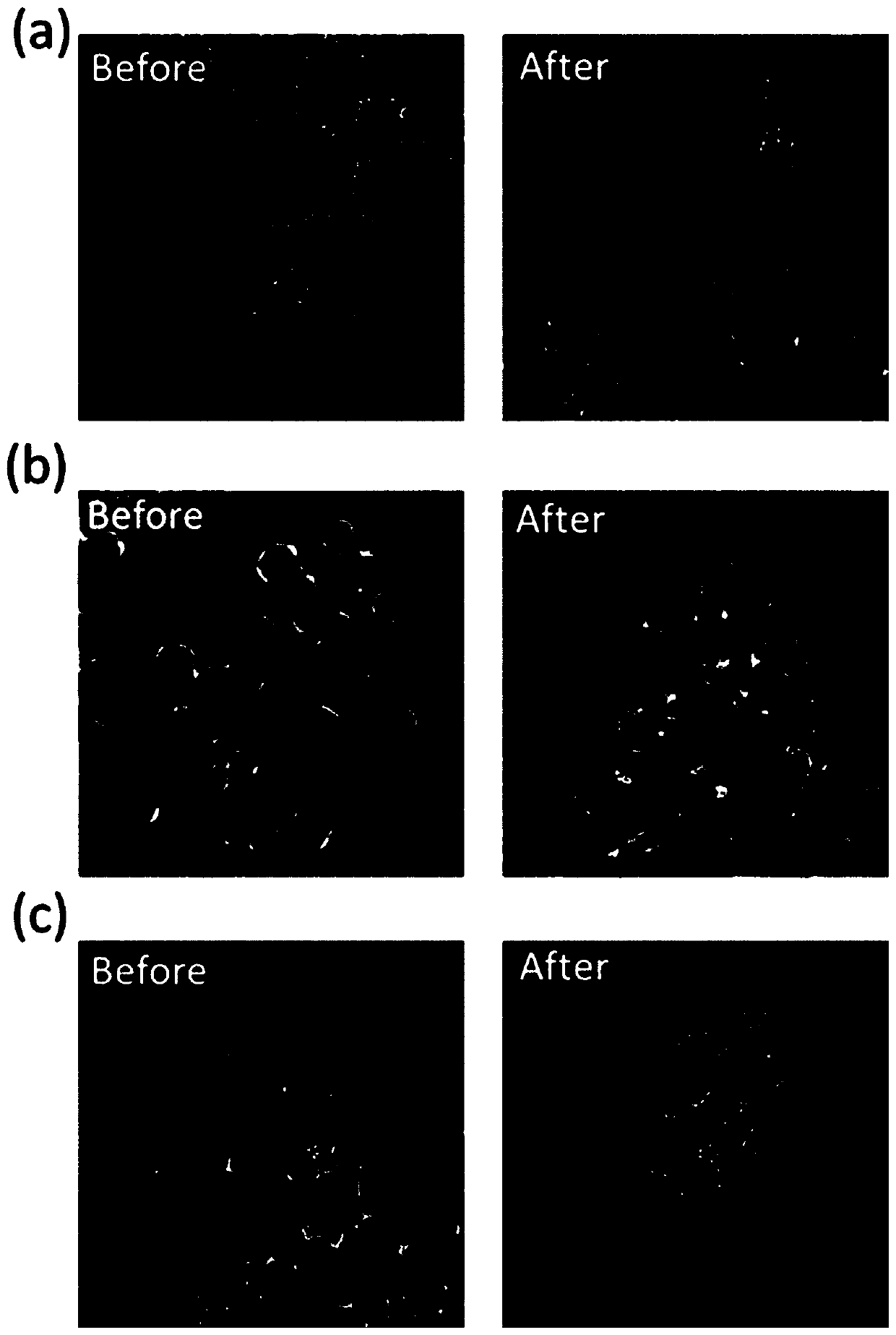Preparation method of defect-rich metal oxide (sulfide)/graphene oxide composite material
A composite material and defect-rich technology, applied in the field of preparation of defect-rich metal oxide/graphene oxide composite materials, can solve the problems of harsh production conditions, high production cost, unreported semiconductor materials and the like
- Summary
- Abstract
- Description
- Claims
- Application Information
AI Technical Summary
Problems solved by technology
Method used
Image
Examples
Embodiment 1
[0021] Preparation of lithium-reduced GO@MoS proposed by the present invention 2 The material can be implemented by the following methods, and the specific preparation method includes the following steps:
[0022] (1) 100~600mg dry MoS 2 Pour the nanoparticles into a beaker, add 20-40ml EDA and 1-3mL graphene oxide gel, and add magnetons.
[0023] (2) 12-36mg lithium metal foil is dissolved in the above solution, sealed and magnetically stirred.
[0024] (3) After fully reacting, gradually add hydrochloric acid dropwise and stir to extinguish excess lithium flakes and form lithium salt to remove residual lithium metal.
[0025] (4) The precipitate obtained after the reaction was washed with deionized water and absolute ethanol, and then freeze-dried.
Embodiment 2
[0027] The preparation of the lithium-reduced GO@ZnO material proposed by the present invention can be implemented by the following method, and the specific preparation method includes the following steps:
[0028] (1) Pour 100-600mg of dry ZnO nanoparticles into a beaker, add 20-40ml of EDA and 1-3mL of graphene oxide gel, and add magnetons.
[0029] (2) 12-36mg lithium metal foil is dissolved in the above solution, sealed and magnetically stirred.
[0030] (3) After fully reacting, gradually add hydrochloric acid dropwise and stir to extinguish excess lithium flakes and form lithium salt to remove residual lithium metal.
[0031] (4) The precipitate obtained after the reaction was washed with deionized water and absolute ethanol, and then freeze-dried.
Embodiment 3
[0033] Preparation of lithium-reduced GO@MoO proposed by the present invention 3 The material can be implemented by the following methods, and the specific preparation method includes the following steps:
[0034] (1) 100~600mg dry MoO 3 Pour the nanoparticles into a beaker, add 20-40ml EDA and 1-3mL graphene oxide gel, and add magnetons.
[0035] (2) 12-36mg lithium metal foil is dissolved in the above solution, sealed and magnetically stirred.
[0036] (3) After fully reacting, hydrochloric acid was gradually added dropwise and stirred to extinguish excess lithium flakes and form lithium salt to remove residual lithium metal.
[0037] (4) The precipitate obtained after the reaction was washed with deionized water and absolute ethanol, and then freeze-dried.
PUM
 Login to View More
Login to View More Abstract
Description
Claims
Application Information
 Login to View More
Login to View More - R&D
- Intellectual Property
- Life Sciences
- Materials
- Tech Scout
- Unparalleled Data Quality
- Higher Quality Content
- 60% Fewer Hallucinations
Browse by: Latest US Patents, China's latest patents, Technical Efficacy Thesaurus, Application Domain, Technology Topic, Popular Technical Reports.
© 2025 PatSnap. All rights reserved.Legal|Privacy policy|Modern Slavery Act Transparency Statement|Sitemap|About US| Contact US: help@patsnap.com



